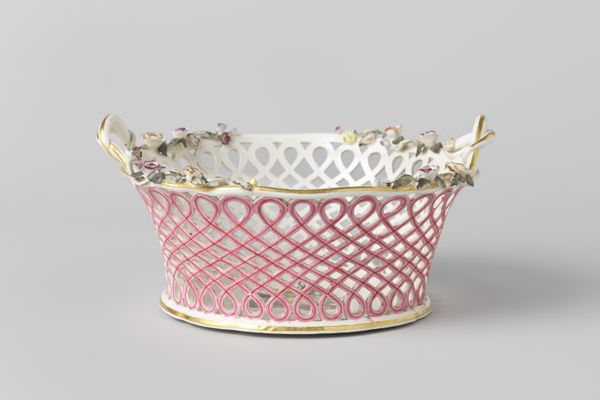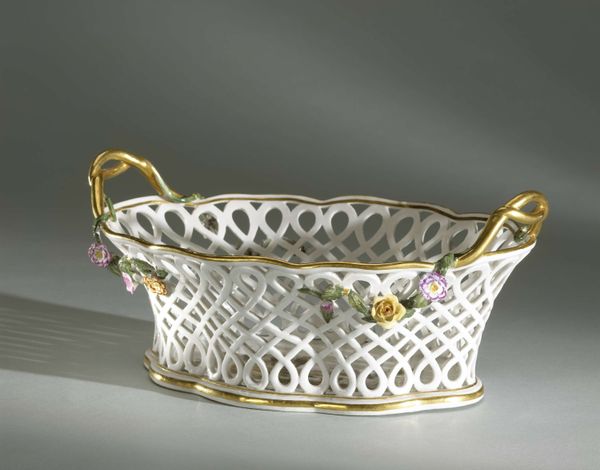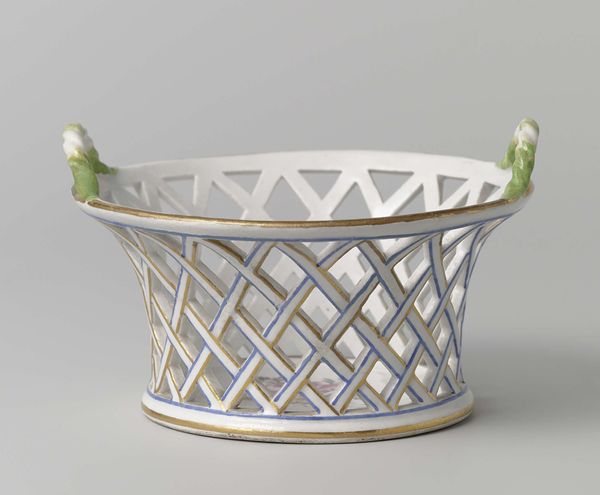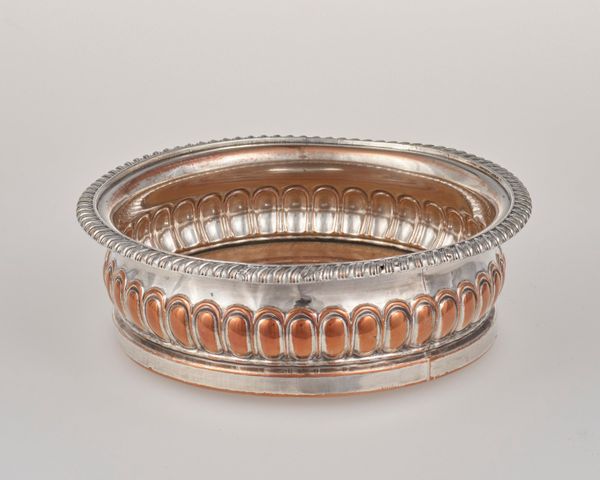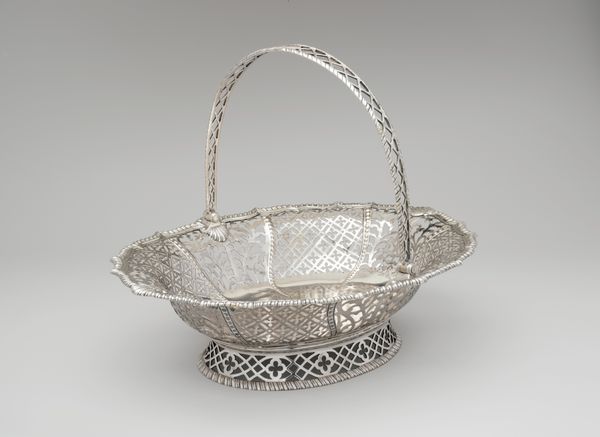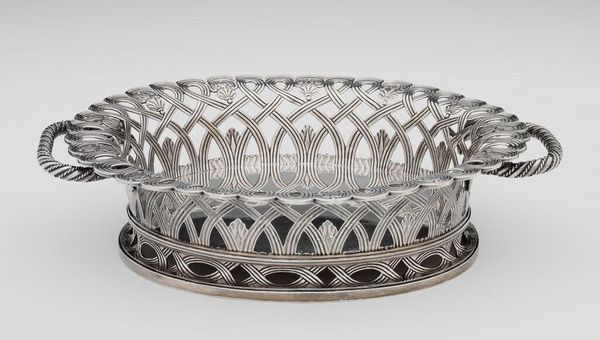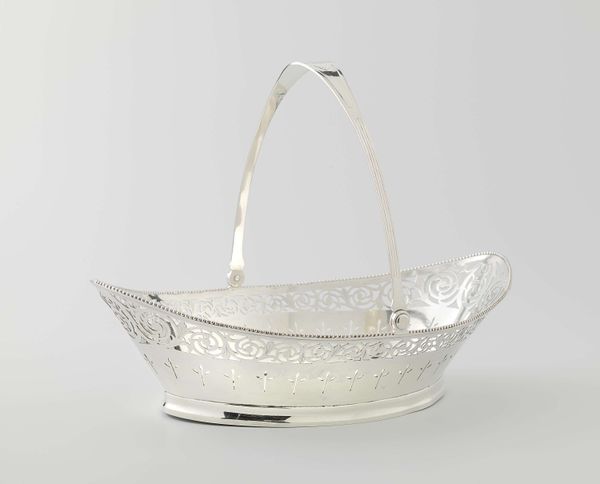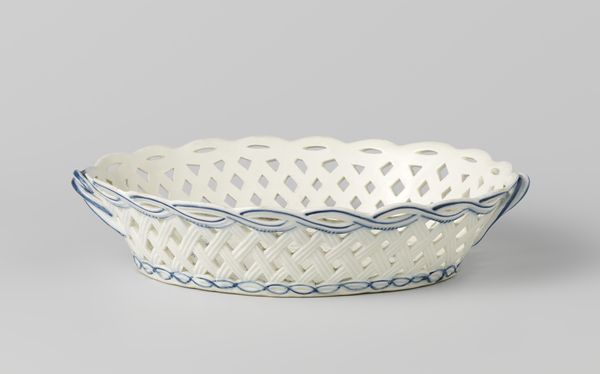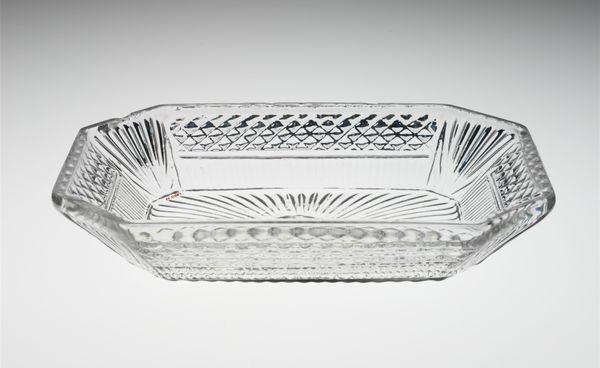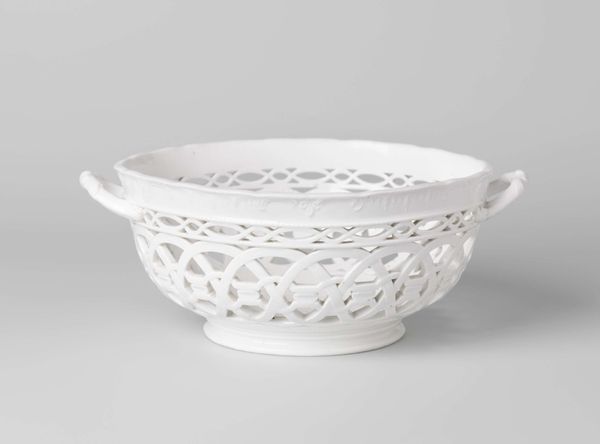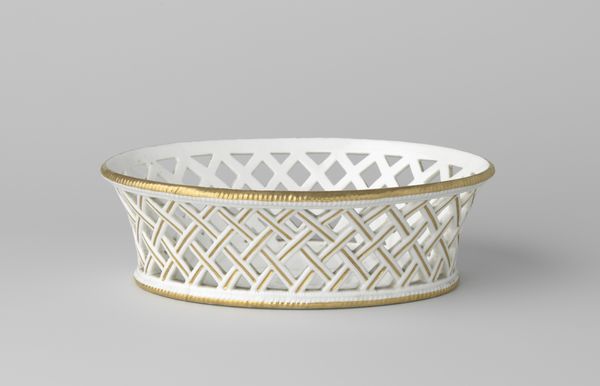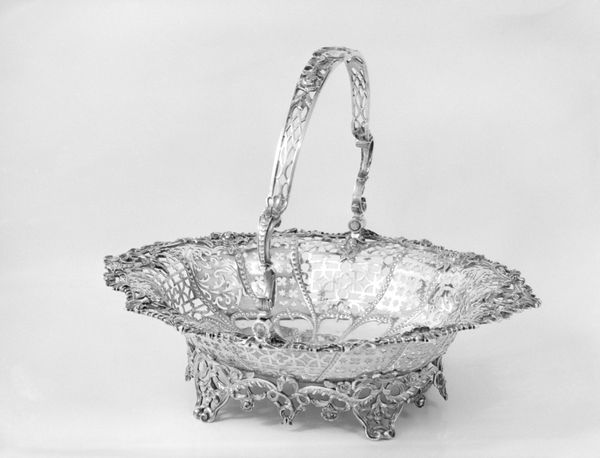
Dimensions: height 10.0 cm, width 20.4 cm, diameter 17.4 cm
Copyright: Rijks Museum: Open Domain
Editor: This delicate object is a porcelain basket made by Loosdrecht, around 1778 to 1782. It has such a whimsical and airy feel to it! I’m curious, what readings do you find particularly insightful in this piece? Curator: The basket’s Rococo style, with its pink woven pattern and floral embellishments, reflects the aristocratic tastes of the era. But, it’s impossible to ignore the intense manual labor needed for such intricate pieces, especially the production of porcelain at the time. How do we reconcile this delicate object with the systems of labor—often unacknowledged and invisibilized—that made such refined consumption possible? Editor: That’s a compelling perspective! I hadn’t really thought about the hands that made it. The artist's skill is evident, but at what cost? Curator: Exactly. Consider where Loosdrecht porcelain was situated in society. Owning objects like this signified wealth and status. What are your thoughts on how porcelain collecting might have served to create and reinforce a certain class identity? Editor: It feels like the pursuit of beauty became a tool for social stratification. That’s quite a contrast to the object's visual lightness. Curator: Indeed. It speaks volumes about the priorities of the wealthy at the time, often detached from the realities of the working class that produced the luxurious objects they enjoyed. Does analyzing this change your perception of decorative art of this era? Editor: Absolutely! It gives the basket a layered meaning that goes beyond mere aesthetics. It becomes a commentary on society and labor relations. Curator: And in turn, our present-day consumption and collecting habits can also come under scrutiny when engaging with this artwork! Thank you for pointing out details of this beautiful, and charged, piece. Editor: And thank you for broadening my understanding of it! It’s inspiring to see how a closer look at history reveals complex narratives.
